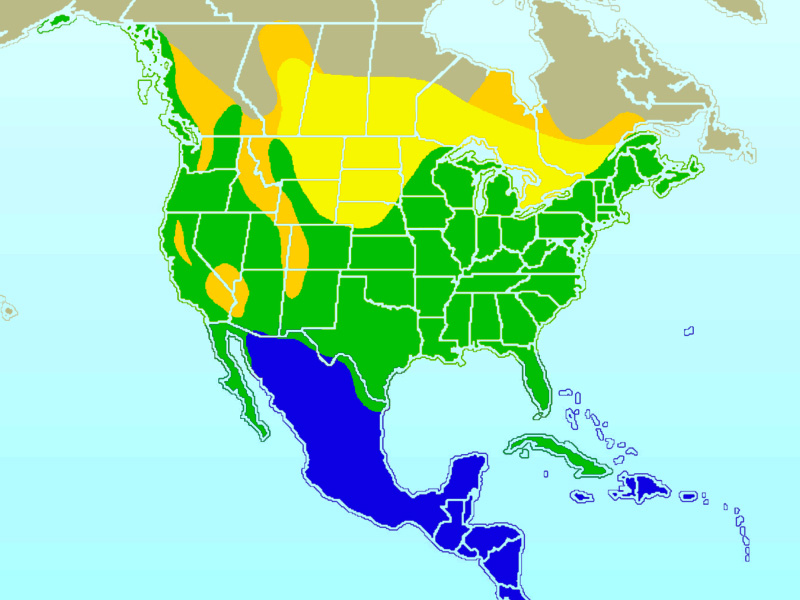
Weights and measures
| Length | from 91 to 140 cm |
|---|---|
| Weight | from 2 to 3,6 kg |
| Wingspan | from 167 to 201 cm |
Animal description
The Great Blue Heron (Ardea herodias) stands as a majestic and emblematic figure in the wetlands and waterways of North America. This large wading bird, characterized by its striking blue-gray plumage, elongated neck, and sharp, pointed bill, is the largest heron native to North America. It possesses an impressive wingspan that can reach up to six feet, allowing it to glide effortlessly over water bodies in search of food.Distinguished by its long legs and s-shaped neck, the Great Blue Heron is specially adapted for life in aquatic environments. Its long, powerful legs allow it to wade through shallow waters, while its neck can swiftly dart forward, enabling it to catch fish, its primary diet, with remarkable precision. Besides fish, its diet is diverse, including amphibians, reptiles, small mammals, insects, and other small creatures that inhabit wetland ecosystems.
One of the most fascinating aspects of the Great Blue Heron's behavior is its hunting technique. It stands motionless, or moves at a glacial pace, blending into the surroundings to ambush its prey. This patience and precision make it a formidable predator. When it spots its target, the heron uses its razor-sharp bill to snatch or spear the prey with lightning speed.
The Great Blue Heron breeds in colonies, known as heronries, which can be found in trees close to lakes, rivers, or swamps. These colonies can range from a few pairs to hundreds of nests, with each nest made of sticks and lined with softer materials. The bird demonstrates a strong fidelity to its nesting site, returning year after year to the same location.
During the breeding season, the heron exhibits a more vibrant plumage and develops long, showy plumes on its chest, back, and head, used to attract mates. Both male and female herons participate in the nesting process, from building the nest to feeding the young. The female typically lays three to six pale blue eggs, which both parents then incubate.
The Great Blue Heron is a symbol of the health and vitality of its wetland and aquatic habitats. As a top predator, its presence indicates a rich, biodiverse ecosystem. However, it faces threats from habitat destruction, pollution, and human disturbance. Conservation efforts are crucial to ensuring the survival of this species and the protection of the wetlands that support a myriad of life forms.
In folklore and culture, the Great Blue Heron is often associated with wisdom, patience, and solitude. Its solitary nature and statuesque presence have inspired countless artists and writers, making it a recurring motif in art and literature. Its ability to stand still for long periods has also made it a symbol of meditation and contemplation.
In summary, the Great Blue Heron is not only a fascinating bird due to its physical attributes and behaviors but also plays a critical role in its ecosystem. Its survival is intrinsically linked to the health of wetland habitats, making its conservation a priority for ensuring biodiversity and ecological balance.
Map of occurrence

Similar Animals
New photos of animals
Top 10 animals
- Dolphin gull (Leucophaeus scoresbii)
- Diana monkey (Cercopithecus diana)
- Moustached guenon (Cercopithecus cephus)
- Galápagos tortoise (Geochelone nigra complex)
- Stone loach (Barbatula barbatula)
- Japanese macaque (Macaca fuscata)
- Russian tortoise (Testudo horsfieldii)
- Greek tortoise (Testudo graeca)
- Common flying dragon (Draco volans)
- Vendace (Coregonus albula)


